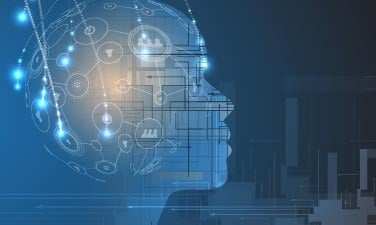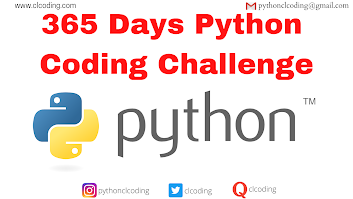In today’s data-rich world, datasets often come with hundreds or even thousands of features — columns that describe measurements, attributes, or signals. While more features can mean more information, they can also cause a big problem for machine learning models: high dimensionality. Too many dimensions can slow models down, make them harder to interpret, and sometimes even reduce predictive performance — a phenomenon known as the curse of dimensionality.
This is where PCA (Principal Component Analysis) becomes a game-changer.
“PCA for Data Science: Practical Dimensionality Reduction Techniques Using Python and Real-World Examples” is a hands-on, applied guide that shows you how to tame high-dimensional data using PCA and related techniques — with code examples, real datasets, and practical insights you can use in real projects.
If you’ve ever struggled with messy, large-feature datasets, this book helps you understand not just what to do, but why and how it works.
What You’ll Learn — The Core of the Book
This book breaks down PCA and related techniques into clear concepts with real code so you can apply them immediately. Below are the core ideas you’ll work through:
1. Understanding Dimensionality and Why It Matters
You’ll start with the fundamental question:
Why is dimensionality reduction important?
The book explains:
-
How high dimensionality affects machine learning models
-
When dimensionality reduction helps — and when it doesn’t
-
Visualizing high-dimensional data challenges
This sets the stage for appreciating PCA not just as a tool, but as a strategic choice in your data pipeline.
2. Principal Component Analysis (PCA) — The Theory & Intuition
Rather than hiding math behind jargon, the book explains PCA in a way that’s intuitive and practical:
-
What principal components really are
-
How PCA identifies directions of maximum variance
-
How data gets projected onto a lower-dimensional space
-
Visual interpretation of components and variance explained
You’ll see why PCA finds the most important patterns in your data — not just reduce numbers.
3. Python Implementation — Step by Step
Theory matters, but application is everything. The book uses Python libraries like NumPy, scikit-learn, and matplotlib to show:
-
How to preprocess data for PCA
-
How to fit and transform data using PCA
-
How to interpret explained variance and component loadings
-
How to visualize PCA results
Code examples and explanations help you bridge from concept to execution.
4. Using PCA in Real-World Tasks
This book doesn’t stop at basics — you’ll see how to use PCA in:
-
Exploratory data analysis (EDA) — visualizing clusters and patterns
-
Noise reduction and feature compression
-
Data preprocessing before modeling — especially with high-dimensional datasets
-
Data visualization — projecting data into 2D or 3D to uncover structure
These real use cases show how PCA supports everything from insight generation to better model performance.
5. Beyond PCA — Other Techniques & Practical Tips
While PCA is central, the book also touches on:
-
When PCA isn’t enough — nonlinear patterns and alternatives like t-SNE or UMAP
-
How to choose the number of components
-
How to integrate PCA into machine learning workflows
-
How to interpret PCA results responsibly
This helps you avoid common pitfalls and choose the right method for the task.
Who Should Read This Book
You’ll get the most out of this book if you are:
Data Science Students or Enthusiasts
Just starting out and wanting to understand why dimensionality reduction matters.
Aspiring Machine Learning Engineers
Looking to strengthen data preprocessing skills before training models.
Practicing Data Scientists
Who work with real, messy, high-dimensional datasets and need pragmatic solutions.
Developers Transitioning to ML/AI
Who want to add practical data analysis and preprocessing skills to their toolbox.
Anyone Exploring PCA for Real Projects
From computer vision embeddings to customer-feature datasets — the techniques apply broadly.
Why This Book Is Valuable — The Strengths
Clear Intuition + Practical Code
You don’t just read formulas — you see them in practice.
Real-World Examples
Illustrates concepts with real data scenarios, not just toy problems.
Actionable Python Workflows
Ready-to-run code you can adapt for your projects.
Bridges Theory and Practice
Helps you understand why PCA works, not just how to apply it.
Prepares You for Advanced ML Workflows
Dimensionality reduction is often a prerequisite for clustering, classification, anomaly detection, and visualization.
What to Keep in Mind
-
PCA reduces variability — but it may not preserve interpretability of original features
-
It’s linear — so nonlinear relationships may still need more advanced techniques
-
You’ll want to explore alternatives like t-SNE, UMAP, or autoencoders if data structure is complex
This book gives you a strong foundation — and prepares you to choose the right tool as needed.
How PCA Skills Boost Your Data Science Workflow
By learning PCA well, you’ll be able to:
- Reduce noise, redundancies, and irrelevant features
- Visualize high-dimensional data clearly
- Improve performance and efficiency of ML models
- Understand data structure more deeply
- Communicate insights clearly with lower-dimensional plots
- Build better preprocessing pipelines for structured and unstructured data
PCA is one of those techniques that appears in Do zens of real data science workflows — from genomics to recommendation systems, from finance to image embeddings.
Hard Copy: PCA for Data Science: Practical Dimensionality Reduction Techniques Using Python and Real-World Examples
Kindle: PCA for Data Science: Practical Dimensionality Reduction Techniques Using Python and Real-World Examples
Conclusion
PCA for Data Science: Practical Dimensionality Reduction Techniques Using Python and Real-World Examples is a practical, accessible, and project-oriented guide to one of the most foundational tools in data science.
It helps turn high-dimensional complexity into actionable insight using a blend of sound theory, real examples, and Python code you can use right away.



















.png)






.png)























